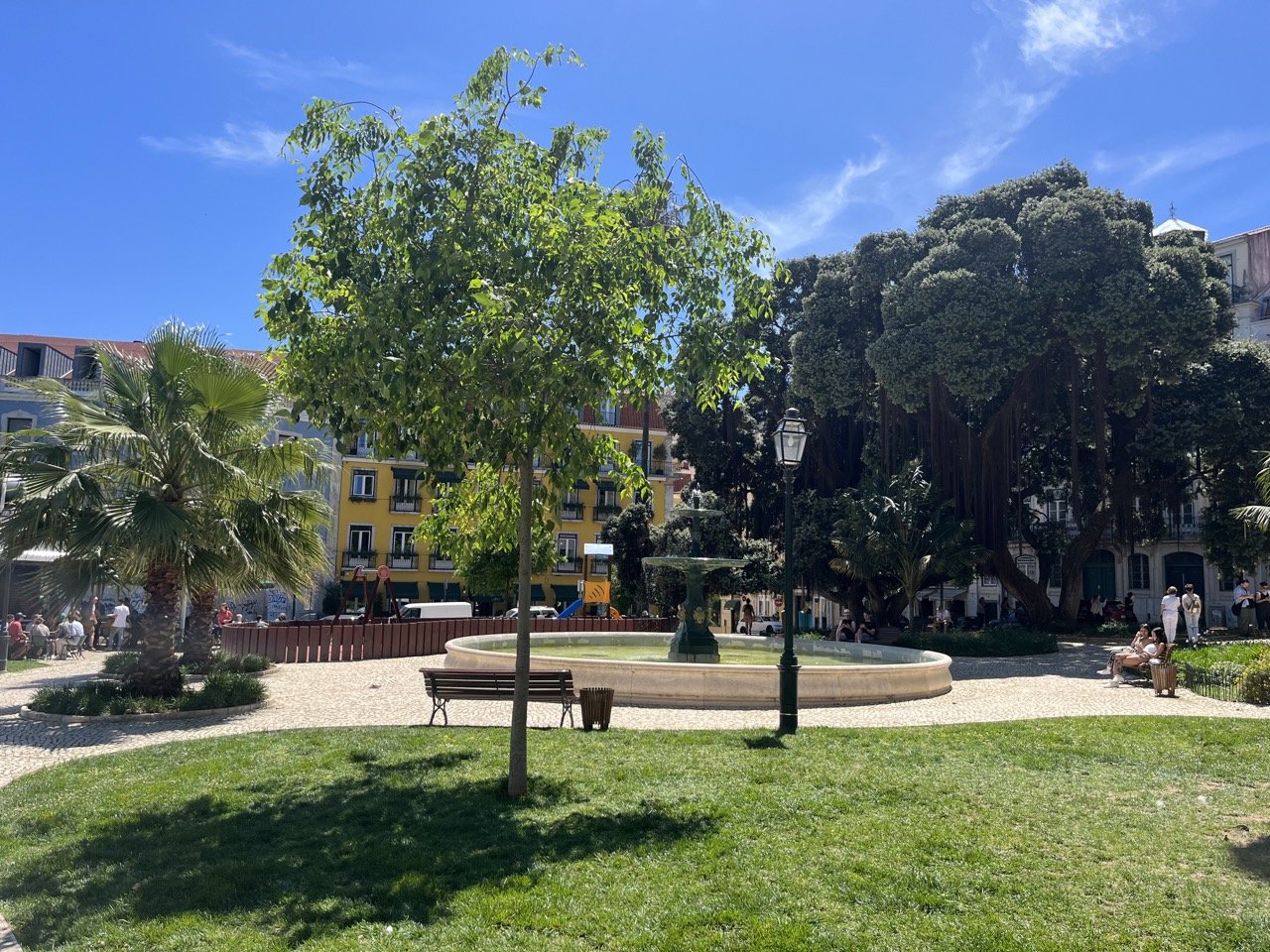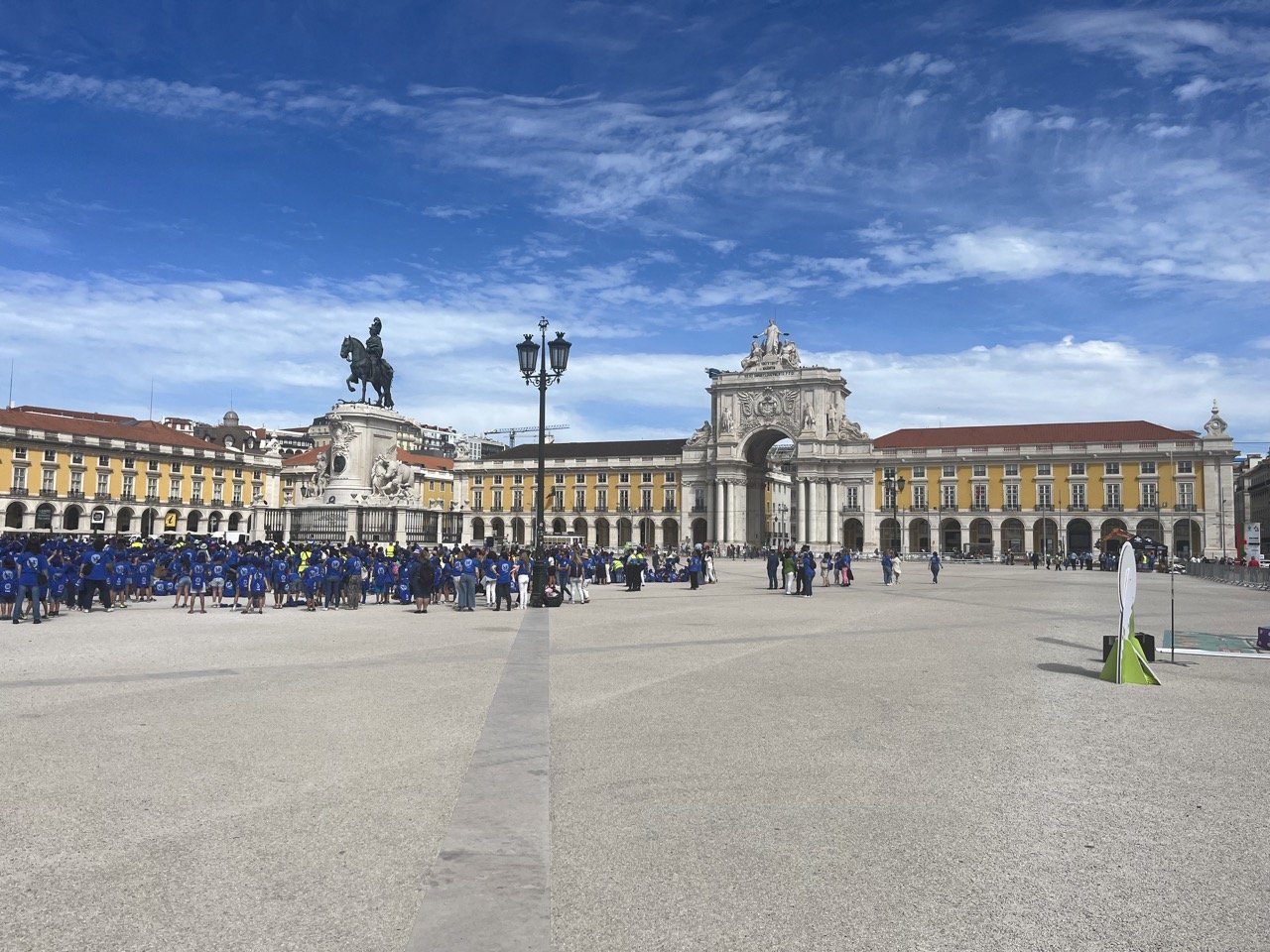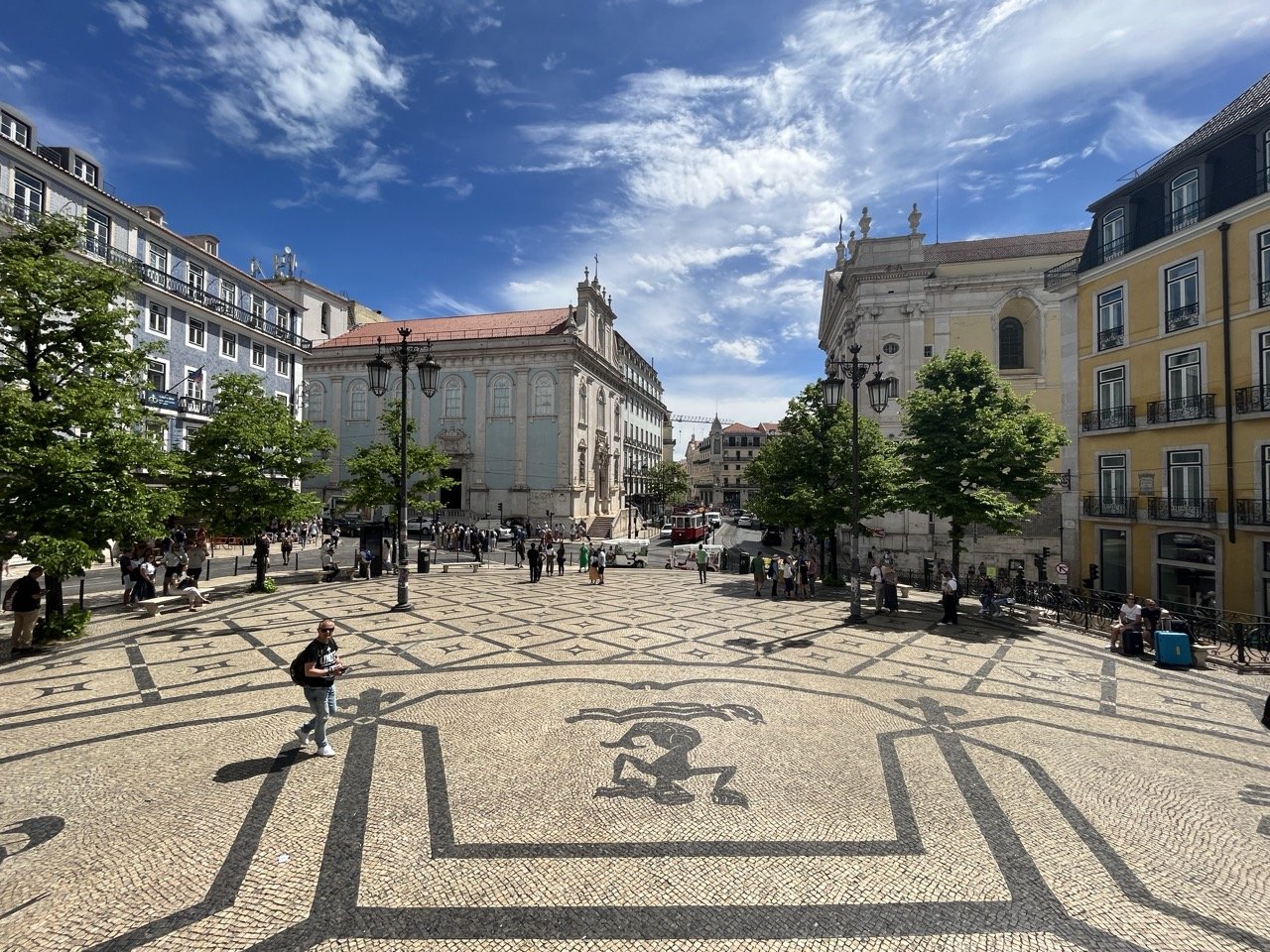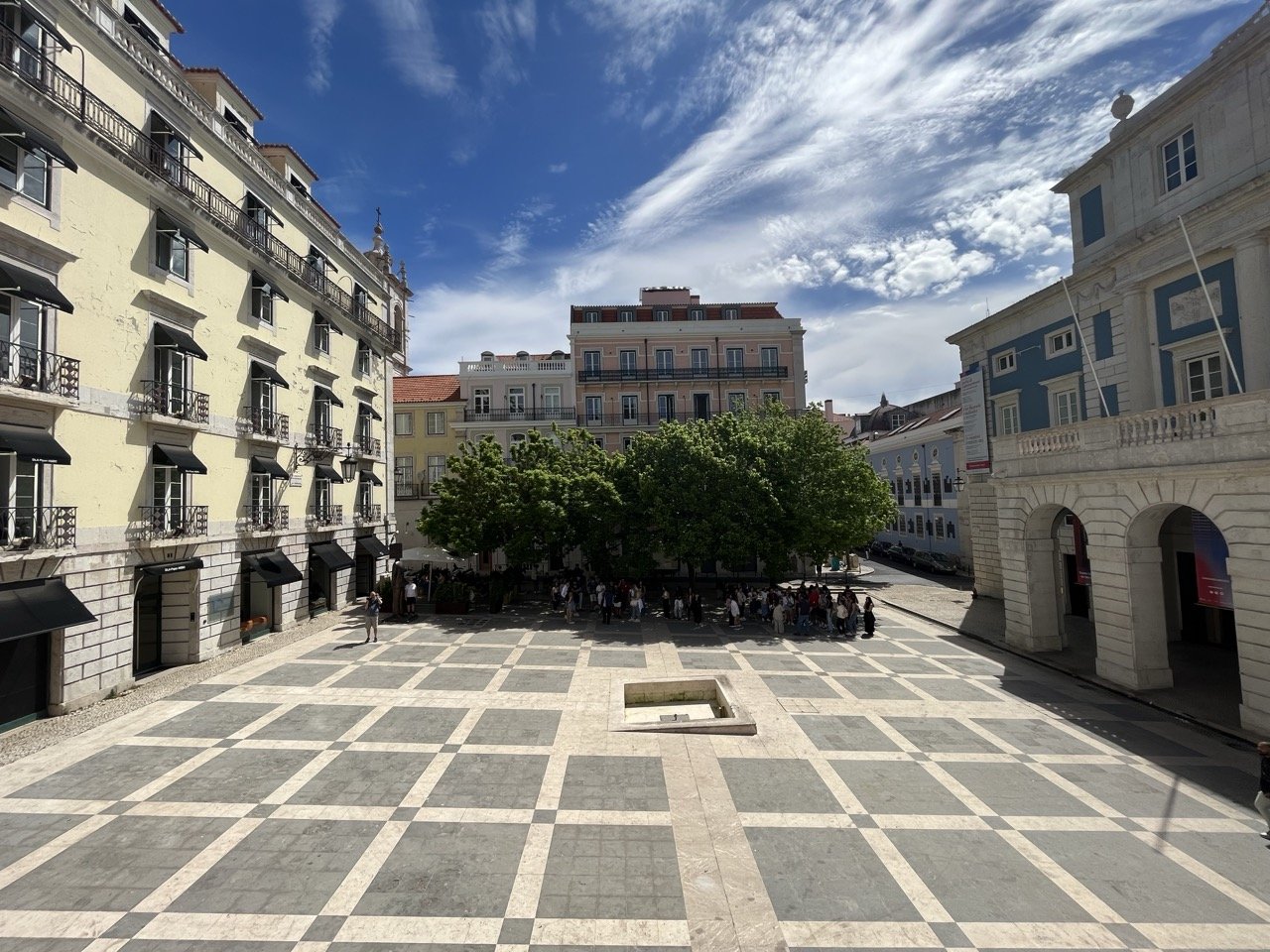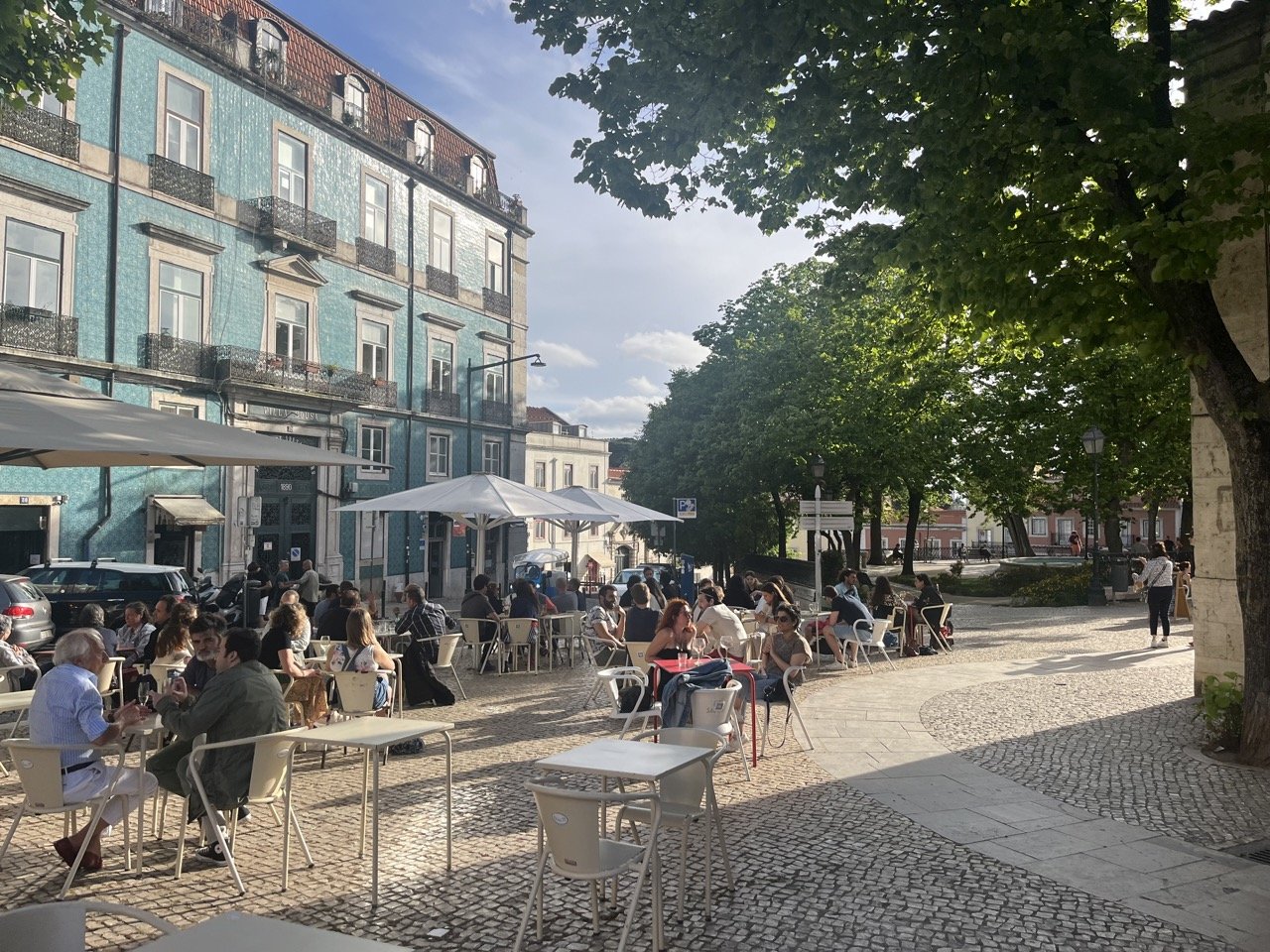Where to Stay in Lisbon - A Local’s Neighborhood Guide
Please note: some of the links in this article are affiliate links. If you book using one of them, we’ll earn a small commission. All of our info is free to read and free of ads, so we appreciate it!
Lisbon, my hometown, is one of Europe’s great cities and its popularity, which has exploded in recent years, now fully reflects that.
The Portuguese capital is one of the oldest cities in Europe, and although much of it was destroyed during an earthquake in 1755, some neighborhoods (like Alfama) survived the destruction and remain beautifully preserved. Other areas were rebuilt and have been continuously modernized over the centuries, which gives Lisbon an eclectic neighborhood make-up.
Millions of international visitors come to Lisbon each year, and in high season, the crowds can be overwhelming. Prices shoot up, availability for everything drops, and the streets become filled with vacationers. And certain neighborhoods are genuinely on the brink of being sacrificed to mass tourism.
Despite all of this, Lisbon has maintained its authentic Portuguese charm, and it continues to captivate both visitors and locals alike with incredible sunsets, lovely architecture, pleasant streets, leafy squares, colorfully tiled buildings, and great cuisine.
Because the city's neighborhoods are so different from each other, where you choose to stay can actually significantly affect your experience while here. So, it's really important to choose not only a good base from a logistical standpoint, but also one that has the character and ambiance that you're looking for.
And that's why I'm here! In this guide, I've tried to provide comprehensive but concise overviews to a series of neighborhoods that I think make sense for most travelers. As a local, I've also shared my honest opinions as well as the pros and cons of each potential choice. I hope you find it helpful.
For more info on the city, have a look at some of our other guides:
Table of Contents
Lisbon planning cheatsheet
 Plan your itinerary with expert advice
Plan your itinerary with expert advice
- Book a Portugal travel consultation with a local expert
 My favorite hotels in Lisbon
My favorite hotels in Lisbon
- One Palácio da Anunciada - 5-star luxury off Avenida da Liberdade. $350/night
- Palácio das Especiarias - Old World charm & elegance in Chiado. $200/night
- Pousada de Alfama - modern little hotel in the heart of Alfama. $200/night
- Alegria Boutique Hotel - bright and airy rooms in Principe Real. $175/night
- Hotel Lis Baixa - small, but cheerful rooms for a bargain in Baixa. $150/night
- Hotel White Lisboa - excellent value with a pool in Avenidas Novas. $140/night
 Guided tours and activities
Guided tours and activities
 How to get around
How to get around
- Car rentals with DiscoverCars
- Metro and bus/tram routes with MetroLisboa and Carris
- Train tickets from Comboios de Portugal
- Long distance buses at Redes Expressos
- Taxis & rideshares with Uber and Bolt


Quick overview of my 5 recommended neighborhoods
Below, I share a quick overview of my 5 recommended neighborhoods.
With a focus on first-time visitors, I’ve mostly selected neighborhoods that I think make sense if you’re planning to do a lot of touristic sightseeing, but have made sure to include a nice mix of more residential, local areas as well.
Which neighborhood is right for you will depend on your goals for your visit.
Lisbon has also started to succumb to over-tourism in recent years, so certain central neighborhoods which would have once been my top recommendations aren't always anymore, especially for anyone wanting an authentic experience.
Further into the article I provide detailed information on each, including pros and cons and hotel recommendations at different price points.
1. Príncipe Real (black on the map above)
Just north of Bairro Alto and the city center and west of Avenida da Liberdade, this is one of Lisbon’s most elegant neighborhoods. Populated by well-heeled locals, there is great shopping on its main tree-lined boulevards and the area is full of good restaurants, cafes, and bars. There are no major tourist attractions here, but it’s well connected by the metro, so moving about the city is easy. It's my top recommendation.
2. Baixa & Chiado (purple above)
These two neighborhoods are adjacent to each other and I don’t think differentiating between them is terribly important. This is Lisbon’s historic center and most guides recommend the area as the ideal choice for first-time visitors because it is extremely central and very well-connected by public transport. I find it to be a bit overly touristy, but it is very convenient and the architecture is quite pleasant.
3. Avenidas Novas (orange on the map)
Somewhat removed from the center, this area is a mix of commercial and residential. One of Lisbon’s most modern neighborhoods, it has multiple subway stops, many larger hotels, and wide, easy-to-navigate streets. It’s not particularly interesting, but it’s pleasant enough and good value for money, especially if you’ll be spending most of your time sightseeing elsewhere anyways. If you'll need to park a car while here, this is where you'll want to stay.
4. Bairro Alto (red above)
Libon’s main nightlife center, Bairro Alto is also one of the city’s most popular neighborhoods for expats and digital nomads. Although within the city center, there are few specific sights in the neighborhood, but it’s pretty, central, and excellent for eating and shopping. While fun for younger people, I don’t usually recommend it for families with kids or older visitors.
5. Alfama (green above)
Alfama, Lisbon’s most historic neighborhood, is beautiful and iconic, but extremely touristy. If you can put up with crowds and don’t mind being surrounded by other tourists, the views, sunsets, and charming maze of streets are atmospheric and lovely. I wouldn’t personally stay in Alfama, but I understand its appeal.
Map of my suggested hotels
For anyone who’s just looking for a quick collection of suggested hotels and doesn’t want to read through my individual neighborhood overviews below, here’s a map of Lisbon that shows all 42 hotels I’ve recommended throughout this guide.
These are spread across the 5 neighborhoods that I’ve suggested that you stay in as well as the 3 others that I think are worth considering. The hotels here encompass a wide range of star levels and nightly prices, so everyone should be able to find something to suit their preferences.
And if you want to know more about the hotels, you’ll find quick descriptions of each of them in the “Where to stay” sections of the relevant neighborhood overviews below.
Happy (hotel) hunting!


1. Príncipe Real
Best for: Upscale residential feel, shopping, foodies, LGBTQ+ community
Pros: Local and residential feel. Pretty architecture. Very green. Good access to transit (metro and bus). Easy access by car. Removed from the center, but still close. Good shopping and dining. LGBTQ nightlife.
Cons: For me, basically none. No tourist sights in the neighborhood. Must take the metro to get into the center (or a 20ish minute walk). Somewhat expensive. Not ideal for those with just 1 day.
Praça da Alegria in Principe Real
Travessa do Salitre street near Praça da Alegria
Avenida da Liberdade
The street next to Jardim do Principe Real square. Photo: Nan Palmero from San Antonio, TX, USA, CC BY 2.0, via Wikimedia Commons
I rate Príncipe Real as the best neighborhood of Lisbon to stay in for anyone with 2 or more days in the city and who is looking for somewhere central and convenient, but not overrun by tourism.
You won’t even see it listed on most “where to stay” guides (largely written by other tourists…), which is a good thing for you because that just means that you’ll have fewer people around and lower prices for hotels!
The neighborhood lies to the northwest of Bairro Alto, centered around the city’s Botanical Garden, with Avenida da Liberdade forming its eastern border.
All around Avenida da Liberdade and its side streets you have loads of good boutiques, luxury fashion brands, nice local clothing stores, restaurants, and bars, the majority of which cater to Lisbon locals. Cafes spill out onto the sidewalk in the shade of big trees, and the many neighborhood squares and gardens are a great place to unwind after a workday, a shopping spree, or a long day of sightseeing.
It’s also a haven for the LGBTQ+ community who head here to party at legendary clubs like Trumps or Finalmente.
Although there are plenty of tourists about, the character of the neighborhood is still mostly local, making it a great choice for those who want to feel like they're staying in a real neighborhood.
Restaurants and shops don't cater to tourists, so you also don't have to worry about tourist traps. And because it's mostly upper middle class locals dining out here, the restaurant scene is excellent; you'll find lots of good Portuguese restaurants but also all sorts of international cuisine.
When it comes to sightseeing, there are no tourist sights here other than the Botanical Garden, but the area is exceedingly pleasant for walks and people watching. You're also walking distance to Chiado, Baixa, and Bairro Alto and there are 3 subway stations in the neighborhood (Rato, Avenida, and Restauradores), so no matter which part of it you choose to stay in, you’ll still always be well connected to the rest of Lisbon.
If you opt to stay here, I would recommending choosing a hotel east of the Botanical Garden, somewhere near to Praça da Alegria or Jardim do Principe Real. From both spots, you're only a 15 minute walk into the heart of Baixa and Chiado or just a stop or two on the metro.
Where to stay
Memmo Príncipe Real - Located near the neighborhood gardens, this lovely 5-star hotel has modern rooms, an outdoor pool, and a cocktail bar with panoramic city views. $250-450 USD.
The Vintage — Elegant and intimate rooms with exquisite design in a 5-star hotel that also has a bistro and a great rooftop overlooking the city. $200-400 USD.
Alegria Boutique Hotel - Very nice boutique property overlooking the wonderful Praça da Alegria square and just a minute or two from great shopping on Avenida da Liberdade (and the Avenida metro stop). The vibe mixes rustic-chic, old world, and modern, and the result is quite nice. Always a great choice. $200-250 USD.
1869 Principe Real - This B&B just south of the Botanical Gardens stands out with its red tile facade. It offers nine lovely rooms and suites that are big and bright, some with private balconies. $175-250 USD (2 night minimum).
Marino Boutique Guesthouse - Pleasant little guesthouse with newly renovated and immaculately clean rooms a block away from Praça da Alegria. $100-200 USD.
Independente Príncipe Real - Set in a 19th-century building, this is a stylish hostel/hotel that has a mix of dorms and private suites. There are two restaurants on-site, including one on the rooftop. $150 USD for private rooms.
Apartment options - Clicking the link to the left will take you to a map of the Principe Real neighborhood on Booking.com with highly rated apartments already selected.
2. Baixa & Chiado
Best for: Visitors short on time who want to stay close to the action
Pros: Location is as central and convenient as it gets. Fairly flat and very walkable. Excellent access to public transport (metro, tram, bus, and long-distance train).
Cons: Somewhat commercial and very touristy, staying here does not always feel like being in a real neighborhood. It’s also quite expensive.
Praça do Comercio in Baixa
Praça Luis de Camões in Chiado
Elevador Santa Justa in Baixa
Largo de São Carlos square in Chiado
It doesn't get any more central than Baixa and Chiado and 95% of guides will tell you this is the best place to stay in Lisbon.
Personally, it’s not my favorite area, but it is a wise choice for lots of travelers, especially those coming for the first time and/or with limited time in the city.
Although technically two separate neighborhoods, Baixa and Chiado blend together, so they’re mostly referred to jointly. This is prime central Lisbon and the neighborhoods are bordered by Alfama to the east, Bairro Alto to the north, the river to the south, and the Estrela/Belem areas to the west.
If you want to differentiate between them, think of it this way: Baixa is the part closest to the river whereas Chiado extends away from the river and further west (towards Belem). I much prefer Chiado, which is prettier, quieter, and less overrun by tourism.
With almost all the city's main sights reachable on foot, this is certainly Lisbon’s most convenient location for sightseeing. You also have excellent access to public transit with multiple metro stops, the Rossio train station, trams, and even some buses.
For accommodation, you have a huge selection here. There are many great hotels, including lots of boutique ones, and loads of basic apartment rentals. Because the area is so central, know that prices are very high and this is not a good area to find a deal.
In terms of atmosphere, the architecture here is very pretty. Rebuilt following the 1755 earthquake that decimated Lisbon (and destroyed almost all of its medieval architecture), you'll find a mixture of grand buildings and pretty pastel-colored apartment blocks. Pleasant cobbled streets weave around, punctuated periodically by charming squares. Steep staircases lead off in every direction. It's iconic Lisbon.
Somewhat a "victim” of its own charm, the area is very touristy and many apartment blocks have been converted into short term rentals and hotels. As a result, you won't find many locals about and the restaurants, cafes, and shops are almost all geared towards tourists.
This is most evident in Baixa, which has always been a commercial area. Although it used to be home to Portuguese shops and merchants, they've almost all been replaced by international brands and this is where you’ll now find the ubiquitous Zara’s and H&Ms, as well as luxury brands like Gucci and Louis Vuitton. You'll also run into lots of tourist touts trying to sell tours, souvenirs, and knick knacks.
My main feeling towards the neighborhood is that it's pretty and charming (especially in Chiado), practical, and extremely convenient for sightseeing. It just doesn't feel local, so if you choose to stay here, I'd recommend heading to other neighborhoods for dining and to get a look at more “authentic” Lisbon.
Where to stay
The One Palácio da Anunciada — This luxury hotel feels like an oasis in the city, with its French-style gardens, large swimming pool, and a spa. Tough to beat if you have the budget for it. $200-400 USD.
Montebelo Vista Alegre Lisboa Chiado Hotel - Another luxurious option with very design-forward rooms. Each room is unique with a mix of modern and old world touches that are really quite pleasant. Great location too. $200-350 USD.
Hotel do Chiado - Modern, comfortable, and relatively spacious rooms just a few steps from Chiado's main shopping streets. Many rooms offer castle and river views $275 USD.
Casa do Barão - Fantastic boutique hotel with really excellent decor and a small, but lovely pool (usually has a 4-night minimum stay). It has very few rooms, so advance bookings are a must. $200-300 USD
Palacio Das Especiarias - Lovely 4-star hotel with lots of Old World charm just off of Praça Luis de Camões square and steps from the Baixa-Chiado metro stop. Good pricing considering the neighborhood and amenities. It's my top suggestion for a mid-range hotel in Chiado. $220 USD.
Vincci Baixa - Yet another excellent hotel from the Vincci group. Great location, small but well appointed rooms, decent breakfast, and really good value for the area. $220 USD.
Hotel Lis Baixa - Small hotel offering simple, but nice rooms in a central Baixa location. Definitely the best cost-benefit ratio in the neighborhood. $150 USD.
Apartment options - Clicking the link to the left will take you to a map of the Baixa/Chiado neighborhoods on Booking.com with highly rated apartments already selected.


3. Avenidas Novas
Best for: Families and couples looking for a quieter atmosphere, anyone needing to park a car
Pros: Good value. Lots of large, modern, and good value hotels. Area is totally flat. Good access to transit (metro and bus) and easy to park a car and/or call taxis.
Cons: Almost no historic architecture. Somewhat far from the city center. Very little to do in the neighborhood itself.
A view over the Avenidas Novas area. Photo: Cruks, CC BY-SA 3.0, via Wikimedia Commons
The garden leading down to Marques de Pombal Square
A typical avenue in Avenidas Novas
Praça Duque de Saldanha square. Photo: Vitor Oliveira from Torres Vedras, PORTUGAL, CC BY-SA 2.0, via Wikimedia Commons
Moving away from the center, Avenidas Novas is a pleasant neighborhood with wide boulevards, well-kept parks, and Neoclassical architecture. It’s one of the newest districts in Lisbon, so don’t expect to find many historical sites, however. This is a “functional” neighborhood, and it’s mostly filled with homes and offices.
During the week, the streets are bustling with people heading to and from work, and during lunchtime, the restaurants fill up with workers on their lunch breaks.
Aside from the Marques de Pombal park and the [excellent] Gulbenkian museum, there are no attractions in the area. It’s not very atmospheric, and you’ll probably find yourself doing little here other than sleeping.
So, why have I recommended it?
First of all, it’s flat. For anyone with mobility issues, little children, or in not great shape, this will come as a major relief.
Next, it’s well-connected with public transport; you have 4 metro stations in the neighborhood, and you can get to both the city center and the airport in just around 20 minutes, with no changes necessary. Also, if you’re arriving to Lisbon by car, it’s one of few places in the city where you’ll be able to park.
And finally, you have a lot of hotels, most of them large, modern, and reasonably priced. Hotel prices in Lisbon can go through the roof from April to November, so if you don’t have a huge budget and are ok with staying somewhere that is pleasant, but not historic, Avenidas Novas is a very good option.
Also, if you’re interested in seeing daily life, the restaurants and cafes are mostly for locals, you’ll see businesspeople on their way to work, and residents going about their regular routines. Additionally, you have everything you need nearby: transit, grocery stores, shops, etc.
The neighborhood is not an obvious choice for first-time visitors, but it’s an excellent alternative to some of the more popular and central neighborhoods, especially if you don’t love being surrounded by crowds every time you step out the door.
Basically, this is a good neighborhood to stay in if you want to find a good deal on a nice hotel, will be spending most of your time elsewhere in the city anyways, and view a hotel as just a place to sleep.
Where to stay
Sublime Lisboa - Just 15 rooms, each unique, elegant, and modernly renovated but with classic style, are set inside a former 1900s mansion. The location near to Parque Eduardo VII and just a couple minutes from the Marques de Pombal metro stop is super convenient. It’s a top option if you want to stay somewhere luxurious, but without an insane price tag. $200-400 USD.
EPIC SANA Lisboa Hotel - A five-star hotel near Parque Eduardo VII featuring a rooftop pool, spa, and gym. $300 USD.
H10 Duque de Loulé — Occupying an 18th-century building a block from Marques de Pombal square, this hotel stands out with pretty blue-and-white tile accents. Many of the rooms offer lovely city views. It’s very good value. $175-220 USD.
PortoBay Marques - At the far southern end of the neighborhood, this small hotel has all the hallmarks of the PortoBay hotel group. It’s modern, functional, comfortable, and a bit corporate, but with some well-done boutique touches. The location next to Praça Marques de Pombal means you are adjacent to two metro lines. $150-250 USD.
Hotel White Lisboa — For those who enjoy a more minimalist atmosphere, this hotel offers spacious, well-lit rooms and an outdoor pool, directly next to a metro stop. $100-150 USD.
Turim Saldanha Hotel - The vibe here is pretty businesslike, but the rooms are quite pleasant and very modern and the price is tough to beat. The Saldanha metro stop is just outside your front tour. $125 USD.
ibis Lisboa José Malhoa — One of the cheapest options in the area. Like every ibis, you get basic and modern rooms that are clean and functional. There’s also a restaurant and a bar. Pets are allowed upon request. $100 USD.
Apartment options - Clicking the link to the left will take you to a map of the Avenidas Novas neighborhood on Booking.com with highly rated apartments already selected.
4. Bairro Alto
Best for: Night owls and young-spirited visitors
Pros: Central location, great viewpoints, excellent dining scene, great nightlife. Not overly touristy.
Cons: Very hilly. Loud at night in certain areas. No metro stop and not tons to do in the area during the day. Not good for families.
Miradouro de São Pedro de Alcântara
Travessa de Santa Catarina at the edge of Bairro Alto
Travessa do Poço da Cidade. Photo: Jorge Franganillo, CC BY 2.0, via Wikimedia Commons. Cropped
Largo da Trindade. Photo: Jorge Franganillo, CC BY 2.0, via Wikimedia Commons
Bairro Alto is just north of Chiado and slightly south of Principe Real. Its name means “high neighborhood” and true to this, it is a hilly neighborhood with some great viewpoints. It’s also full of pretty architecture and charming cobblestone streets.
Densely populated and very popular with expats, it's changed a lot as Lisbon has become so popular with digital nomads. It's now a pretty even mix of locals, expats, and tourists and you can see this reflected in the very international and cosmopolitan character of the restaurants and shops.
There are no specific tourist sights in the neighborhood (other than the great view from Miradouro de São Pedro de Alcântara), but it’s only a few minutes’ walk to the city center, so you can get into town for sightseeing and exploring quite quickly and easily. You don't have any public transit (aside from the tram), but you can walk to the metro in Baixa or Chiado.
For shopping and browsing, the area is full of independent boutiques, art ateliers, and little galleries that have set up here in recent years. I really like Oficina Marques, with their infamous repurposed woodwork. For dining, there are countless hip cafes and restaurants, with a very nice mix of traditional Portuguese and international and fusion restaurants. It's a really nice dining and bar scene.
Before considering the neighborhood it’s important to know that this is one of Lisbon’s major nightlife areas, and the streets are packed with little bars that are lively every night of the week. A night out in Bairro Alto is a rite of passage for anyone who has grown up in Lisbon. It's not a club district and the nightlife isn't overly rambunctious or "sloppy", but for those trying to sleep it can still be quite loud.
Many houses in this area have thin walls, so this can be a problem if your accommodation is near a bar, especially during the weekend. With that said, the neighborhood is pretty quiet in the mornings and it can be perfectly fine so long as you find a place a little removed from the action.
I like Bairro Alto and think it's a lot of fun, especially for those in the age range of 25-50 (or just young at heart!). If you’re looking to stay somewhere pretty, want to partake in at least some nightlife, and are ok with occasionally walking up and down hills (or taking a cab), it can be a good choice. If you're older, coming with kids, or value peace and quiet, I'd avoid it.
Where to stay
Bairro Alto Hotel - Facing Praça Luís de Camões, this luxurious hotel sits in a great location between Chiado and Bairro Alto. Rooms are spacious and the property is exceedingly elegant. $350-500.
The Lumiares Hotel & Spa - 5-star hotel with big suites and apartments that come with equipped kitchens. It also has a rooftop bar, restaurant and a spa. $300-500.
Palácio Ludovice Wine Experience Hotel - A nice blend of classic and contemporary in this 18th-century palace that was once the home of João Federico Ludovice, architect to King João V. There’s also a spa and a restaurant and bar. $250-400 USD.
Almaria Edificio Oficina Real - Lovely little guesthouse with bright and modern rooms in a central Bairro Alto location. Located lower down in the neighborhood, it limits how many hills you’ll have to climb to get home. $200 USD.
LX Hotel - Technically in Cais do Sodre and not Bairro Alto, it’s right on the border. You’re close to all the nightlife in these two neighborhoods, but far enough removed to not have to listen to it. The hotel is the result of the renovation of a previous century-old hotel and it now offers cozy rooms, some with a good view over the river. $125-200 USD.
Bairro House Charming Suites - Right in the heart of Bairro Alto, this guesthouse puts you in prime position to explore the area’s pleasant side streets. Rooms are across multiple floors and there’s no elevator, so be prepared to climb some stairs. $125-150 USD.
Selina Secret Garden & Coworking - An ideal spot for young travelers working remotely, Selina offers a co-working space and events throughout the week like yoga and DJ sets. $100 USD for private rooms with a shared bathroom or $150 with an ensuite.
Apartment options - Clicking the link to the left will take you to a map of the Bairro Alto neighborhood on Booking.com with highly rated apartments already selected.


5. Alfama
Best for: Those looking for beautiful architecture, romantic atmosphere, and postcard views
Pros: Historic, beautiful, and iconic. Near to many of the city’s major sights and attractions.
Cons: Extremely touristy, poor public transit (tram only), no car access. Narrow and hilly streets are challenging for those with mobility issues. Expensive.
The view from Miradouro de Santa Luzia
Steep staircases abound
A typical Alfama street
Largo do Chafariz de Dentro square
Alfama features either in first or second place on most “where to stay in Lisbon” guides so I understand that it may be a bit surprising that I’ve listed it so late in mine. But I’m a local and I’ve tried to be honest with my recommendations.
Let me preface the rest of my comments by first making clear that Alfama is gorgeous, historic, and iconic. You can’t help from taking out your camera when wandering around the area, and whether you’re snapping shots of the river views or of the pastel-colored buildings, this is Lisbon’s most picturesque neighborhood.
Most of Alfama’s charm comes from being the oldest district in the city, having survived the earthquake of 1755. This means that unlike many of Lisbon’s other neighborhoods that have wide streets and clear city blocks, Alfama is a maze of winding alleys and tumbling staircases filled with original medieval architecture.
The area is also home to some of Lisbon’s major sights: the Castelo de São Jorge, the Panteão Nacional, and the Sé Cathedral. You have numerous great viewpoints (like Santa Luzia and Portas do Sol) and you’re close to other lovely neighborhoods like Baixa and Chiado.
Because the buildings here are small, the hotels that you'll find are mostly boutique options with only a few rooms or apartment rentals. There are no large, corporate style hotels. As one of the most sought after parts of the city by tourists, prices also tend to be quite high.
In terms of transportation, the streets are narrow and hilly, making access by car and bus impossible in many areas. There is tram access, but because it is not a tourist attraction, it can be hard to get a seat. There are no metro stops either. Because streets are steep and stairs are unavoidable, travelers with mobility issues will struggle here. That said, you can fairly quickly walk to the metro in Baixa.
It's also important to know that this is Lisbon’s most intensely touristy neighborhood. Almost all of the longtime residents have either been forced out by rising rents or chosen to leave and the character of the neighborhood has changed dramatically. What was once a working class neighborhood - the birthplace of our mournful Fado music - has now become an area where you will find almost only tourists.
The restaurants, cafes, and bars are not frequented by locals, and many of them are objectively tourist traps. No matter the time of day, you’ll find crowds of visitors here, lining up for things like the packed Tram 28 or to take selfies at the Miradouro de Santa Luzia. While unmistakably a beautiful neighborhood, the feeling of mass tourism is inescapable.
Now, these downsides shouldn’t necessarily dissuade you from staying here. The neighborhood is beautiful, and getting lost in the labyrinth of narrow streets is a delight. Forget directions; just walk aimlessly and admire your surroundings.
And if you stay here, you'll get the chance to enjoy the neighborhood early in the mornings before the crowds have arrived or late in the evenings after they’ve left, which is lovely. I’d just recommend you go elsewhere for most of the day.
Alfama is a perfectly nice choice is you want to stay somewhere charming, picturesque, and romantic so long as you’re ok with the fact that it will feel very touristy.
Where to stay
Santiago de Alfama - Just minutes from São Jorge Castle, this is a 5-star boutique hotel housed inside a pretty 15th-century building. Rooms are elegant, open, and very well set up, most of them with privileged views over Alfama’s red tile roofs. Easy choice if it’s within your budget. $300 USD.
Memmo Alfama - Tucked away in a small alley, this modern 4-star hotel offers rooms with breathtaking views of the river and the Panteão Nacional. The swimming pool is a treat on hot summer days. $175-350 USD.
Solar do Castelo - Located inside the castle grounds, this four-star hotel oozes character with exposed stone walls, wooden ceilings, and antique furniture. $250-350 USD.
Pousada de Alfama — Located just opposite the Miradouro das Portas do Sol, this 4-star hotel has nice rooms with fantastic views. In the entrance courtyard, a huge work by local artist Bordalo II welcomes guests. $150-250 USD.
Alfama Lisbon Lounge Suites — Around the corner from Castelo de São Jorge, these modern apartments are spacious and offer basic amenities, including a kitchenette. $100-150 USD.
Mouraria Lisboa Hotel - Small and simple but charming enough. The rooms here get good ventilation and there’s a pleasant communal patio. The location, at the beginning of Mouraria and just outside of Aflama, is only a 10 minute walk to the Rossio train station. $100 USD.
Apartment options - Clicking the link to the left will take you to a map of the Alfama neighborhood on Booking.com with highly rated apartments already selected.


Other neighborhoods to consider
I think the above 5 neighborhoods are the right choices for most people. However, if you’re looking for more options, here are 3 other parts of the city that I think could be choices.
These neighborhoods, while still mostly convenient for sightseeing, are a bit more off the beaten path, meaning that you’ll get a more local experience in them. There are drawbacks to each though, so think carefully about whether they’ll be a good fit for your trip.
Alcântara, Estrela & Madragoa
Best for: Remote workers, foodies, and families with kids
Just west of the neighborhoods of Chiado and Bairro Alto, these three neighborhoods form a kind of triangle, with Alcântara and Madragoa lining the riverfront, and Estrela sitting on the tip of the hill. Although each their own neighborhood, I list them together because they have a similar vibe.
Still central, but away from major tourist centers, they are residential and very pleasant. They’re popular with wealthy locals and expats and you’ll find lots of good shops, pleasant cafes, and lovely parks and squares. The vibe is calm, but lively.
This part of Lisbon offers a more local vibe. A middle class area of the city, in recent years it has also become popular with expats and longer term visitors. Because of this, there’s a distinct international and cosmopolitan flair, but not really a touristy one. You have some really good restaurants in the neighborhood too.
Just outside of the center, you are connected to the rest of the city by bus and tram (and one metro stop). All 3 neighborhoods are still close enough to be relatively convenient for sightseeing, but know that if you choose to stay here you’ll probably wind up having to call a Bolt/Uber/Taxi at least a few times.
I think these areas make for an excellent base for visitors with at least a few days here and who want to be central, but somewhere residential and less touristy.
Pros
Local, residential feel. Lots of green space and parks. Excellent dining.
Cons
Poor public transport - no metro or tram. Not good for those with just a couple days.
Where to stay
Olissippo Lapa Palace - A luxury hotel housed in a 19th-century palace featuring a spa, two pools, and stunning river views ($600).
York House - This boutique hotel is conveniently located next to the Museu Nacional de Arte Antiga and several cafés ($150-200).
LX Hostel - Located inside the LX Factory, this is an ideal choice for travelers on a budget. Pets are welcome ($40 dorm, $100 private room).
Graça
Best for: Repeat visitors looking for a more local atmosphere
Pros: Local, residential feel. Picturesque and historic architecture. Great dining. Great views. Very good choice for returning visitors
Cons: No metro stop (tram only). Inconvenient for sightseeing. Not a good choice for first-time visitors with limited time
Set on a hill, Graça offers some of the best views in town. This picturesque neighborhood is only a few minutes up from historic Alfama, but it has a very different atmosphere, with cozy wine bars, dog-friendly gardens, and colorful murals that keep popping up on every corner almost daily.
This is one of my favorite areas in Lisbon, and although the neighborhood has changed significantly in the last 10 years, it retains much of its local, down-to-earth charm.
The traditional restaurants and shops are still here, but the area has also become much trendier in recent years, which is evident from the many brunch spots and natural wine bars (change comes for us all!).
There’s plenty to do right in the neighborhood, from thrift shopping at Humana, to watching the sunset at Miradouro da Senhora do Monte, or catching an open-mic session at Camones.
What makes Graça special, however, are the little villas like Vila Berta and Estrela d'Ouro. Originally built as an area for workers, these are like a neighborhood within a neighborhood, with cute terraced houses and tiled facades.
If you’ve visited Lisbon before and have already covered most of the monuments, or if you just like staying in pleasant local areas, this is a great place to soak in the atmosphere and see local life. Some people like the area so much that they rarely leave the neighborhood.
Now, the downside of staying here is that it’s very poorly connected to the rest of the city. You have no metro stops and will be entirely reliant on trams and/or taxis. For this reason, despite the fact that I personally love Graça, I rarely recommend it to first time visitors and never to anyone with just 1 or 2 days in the city.
Where to stay
Santa Clara 1728 - With only six suites, this upscale hotel is ideal for a romantic getaway. It’s located between Alfama and Graça ($500 USD, 2-night minimum).
Albergaria Senhora do Monte - Just a few steps from the Miradouro da Senhora do Monte, this three-star hotel offers rooms with incredible city views ($180).
Tings Lisbon - An affordable B&B featuring 16 rooms and a cozy outdoor patio ($120).
Belém
Best for: History lovers, families who want space for the kids, anyone looking for peace and quiet
Pros: Very calm area. Some excellent high end hotels. Close to some of Lisbon’s most important monuments
Cons: Far from the center. No metro stop (tram only). Feels a bit empty. Limited dining options. Packed with thousands of visitors during the day
Hugged by the Tejo river, Belém lies on the waterfront on the western edge of central Lisbon.
Although it’s removed from the city center, this is where you’ll find most of Lisbon’s museums and many old landmarks and monutment that are connected to the country’s maritime roots. Because of this, it’s always full of visitors.
You'll see people queuing up to visit the Gothic-style Mosteiro dos Jerónimos monastery, or to taste the original custard tart (pastel de nata) from the Antiga Confeitaria de Belém. Although the shop has become quite touristy, locals also like to grab a pastel de nata from there whenever passing through the neighborhood.
Although full of tourists in the daytime, almost everyone visiting merely comes by to see the Monastery, tower, and monuments, leaving the neighborhood behind by the evening. That means that in the evenings the area returns to being a mostly local place and if you stay here you’ll be able to grab dinner or drinks in small little restaurants mostly catering to residents.
For a stroll, you can walk along the area’s riverfront promenade or, for something even more active, cycle it all the way into the city center.
The biggest perks of staying in Belém are that you can get to the monuments very early (before the crowds) and it’s a bit closer to the Cascais coastline than the city center (20-minute train ride).
Keep in mind that are only a few hotels in this area, and most are pretty high-end, so unless you plan on splurging during your stay, you won’t find many options. If you do have a big budget, some of the hotels are grand oases of calm with verdant gardens, elegant architecture, and big pools.
As for transportation, it’s ok. There is no metro stop, but you both have tram and bus access. Typically, you can get into the city center in about 20 minutes.
Where to stay
Altis Belém - Facing the river, this luxury hotel features a Michelin-star restaurant, swimming pools and a spa ($350).
NAU Palácio do Governador - Set in a 17th-century mansion, this hotel is a short walk from Torre de Belém. Facilities include a restaurant, bar, outdoor pool, gym and spa ($275).
Jerónimos 8 - An affordable option right next to the Mosteiro dos Jerónimos offering modest rooms ($150).


More Lisbon & Portugal travel info
For more advice on planning your trip to Lisbon and Portugal, have a look at some of our other guides and itineraries!
*For any readers coming from Germany or Austria, you might also check out this very helpful post on things to do in Lisbon all written in Deutsch!

Connect with a local expert







